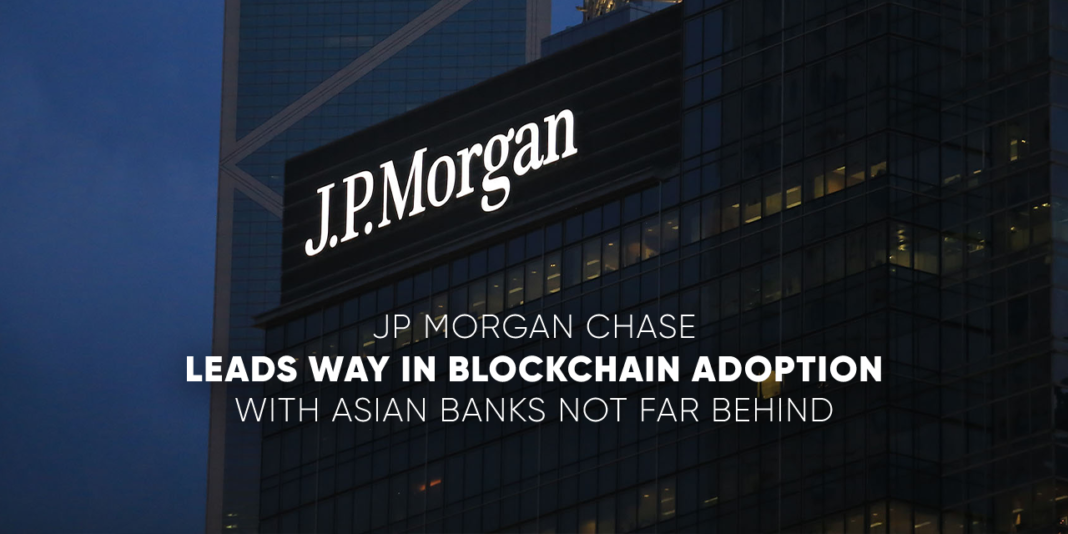JP Morgan, a reputable bank in the United States, has made notable strides in embracing blockchain technology. From its investments in blockchain, it’s clear that the bank is keen on staying ahead with technology.
According to JP Morgan:
“[Using] blockchain technology can significantly simplify the proxy line in the payment process, and the investment bank’s front-end process and operating system can save about $10 billion annually.”
Unfortunately, even with blockchain presenting such tremendous benefits, traditional financial institutions are still using manual methods to connect between themselves. As a result, the financial institutions incur costs and grapple with an opaque process.
The journey started in 2015, results in 2016
JP Morgan’s interaction with blockchain technology started in 2015. However, notable strides were made in March 2016 when it demonstrated the Juno, a distributed encrypted ledger. 7 months after Juno, JP Morgan developed Quorum, an Ethereum-based private blockchain platform. Being a regulated bank, the private network is open to scrutiny from regulators. Although Quorum is private, it has been used by reputable firms such as Starbucks Coffee, Louis Vuitton, USAA Insurance, State Agricultural Insurance Company, VAKT, among others.
Additionally, it’s on the same platform that the bank developed the JPM Coin, a cryptocurrency for timely payments. Currently, JP Morgan is attracting more participants on the Quorum platform by minimizing its shareholding on the project.
Apart from Quorum, in 2017, JP Morgan joined hands with ANZ and RBC to developed the Interbank Information Network System (INN). The platform aims to use blockchain technology to “optimize and improve global payment processes and resolve payments between banks.”
At present, the Interbank Information Network System has over 250 financial institutions across the world. They include China Dalian Bank, China CITIC Bank, Nanyang Commercial Bank, among others.
Quorum seeking mass adoption
However, JP Morgan has been pushing for the mass adoption of Quorum. For example, in May, the bank partner with Microsoft in a bid that would see Quorum integrated into Azure, Microsoft’s cloud computing platform.
Interestingly, JP Morgan is among a few large companies that have announced and implemented their blockchain-based projects. According to Reuters, most blockchain-based plans by large companies don’t go “beyond the testing phase, and those that have completed testing have not yet entered the widespread application phase.”
Asian Banks making large strides
Banks and financial institutions in Asia are also making heavy usage of blockchain technology. For instance, earlier this year, China, through the China Banking Association (CBA), announced a blockchain-based platform to enable trade finance. The platform already has over 10 leading banks such as China Merchants Bank, HSBC (China), China Postal Savings Bank, Ping An Bank, among others.
In May, the Monetary Authority of Singapore (MAS) and the Bank of Canada (BoC) announced the successful completion of blockchain-based cross-border payments between the two central banks.
A joint report published by the central bank of Canada and the central bank of Singapore noted that:
“A fragmented world, with differing standards, processes, norms, and regulations is the key challenge in cross-border payments today. DLT (distributed ledger technology) could offer an easier and faster path towards adoption than a centralized approach. It can leave the different jurisdictions involved in the control of their portion of the network while allowing for tight integration with the rest of the network.”
Also, in April, Thailand and Myanmar Banks announced the development of a cross-border transfer service that will employ blockchain technology. In July, the Philippines and Singaporean banks joined hands to send tokenized fiat using blockchain technology. Notably, Asian financial institutions are making substantial investments in blockchain technology.






















